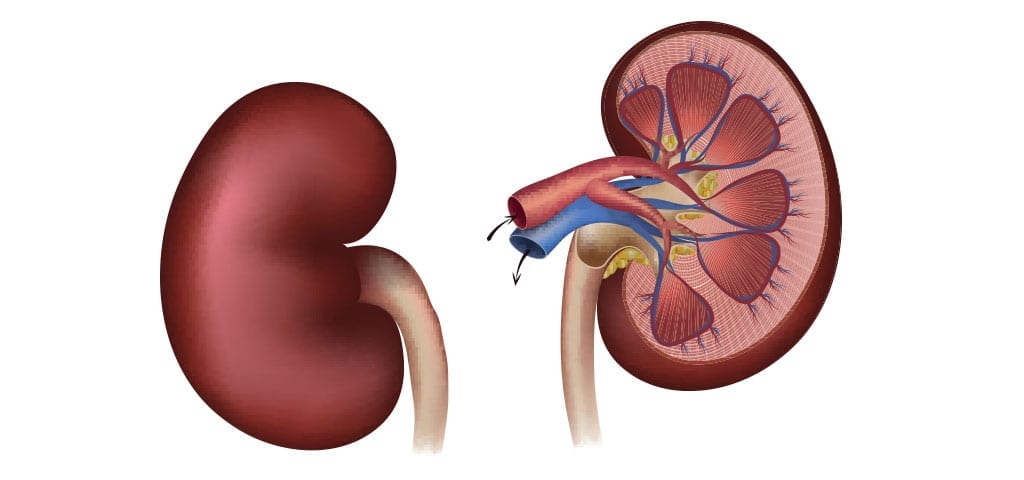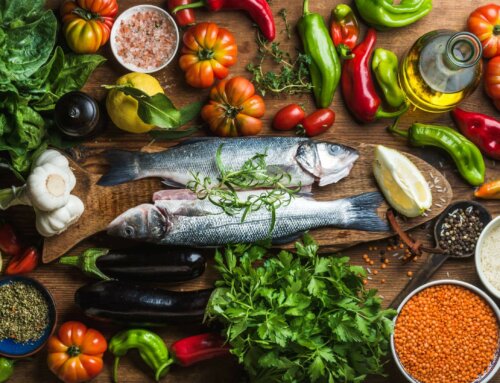Kidney stone formation seems to be more prevalent during the summer season due to the weather being hot and dry. Many people suffer from dehydration during the summer months and dehydration can increase the risk of minerals to crystallize in the kidneys of certain individuals. According to a report in the Journal of European Urology, “kidney stones affect about 9% of the US population which has doubled in the last 15 years”. Although the reason is not completely clear, there seems to be a connection to the increased obesity rates along with the typical American diet. Asians and Caucasians are at higher risk than African Americans and Native Americans. People that live in the South or Southwest (hot and dry) produce more kidney stones.
Those with type 2 diabetes have insulin resistance which causes higher amounts of acid in the urine and may be a reason for uric acid stones. People that have gout also produce high levels of uric acid which can lead to more kidney stones. Those who suffer from hypertension, IBS (irritable bowel syndrome), hyperparathyroidism, or excess blood calcium all have higher incidences of kidney stones. Men tend to suffer from more kidney stones but the gap is recently narrowing with women. Stone formation is most prevalent in men between 20-70 and peaks in women in their 50’s. Immobilization or lack of movement is a risk factor for stones. Calcium oxalate makes up the majority of stones, along with calcium phosphate, uric acid and struvite (magnesium, ammonia and phosphate). A family history or personal past history of kidney stones make you more susceptible. The more animal protein and sodium in the diet, the higher the risk of kidney stone production. Even certain medications can increase the possibility of stones including diuretics, antacids with calcium and Crixivan to treat HIV.
What are possible symptoms?
Some stones can be silent, although most appear with sudden extreme nagging and cramping pain that does not change with body position. It may cause nausea, vomiting, cloudy, and bloody or foul smelling urine. There could be a fever, chills and difficulty in passing the urine. It has often been compared to the “pain of childbirth”. Many people appear in the emergency room due to the intense excruciating pain. Kidney stones are usually diagnosed by an ultrasound and X-rays of the abdomen along with blood work and a history/physical exam by the physician. Kidney stones can be found in the kidneys, bladder or ureters. The pain is usually associated with the size and the location of the stones.
What are other risk factors?
- Alcohol binge drinking
- Chemotherapy medications
- Fasting
- Lead poisoning
- Anemia
- Blood cancers: Leukemia, lymphoma, multiple myeloma
- Chronic UTI’s (urinary tract infections)
How do I lower my risk of kidney stones?
- DASH Diet(Dietary approaches to Stop Hypertension). This diet has been suggested as a good plan for reducing hypertension, stroke, heart disease/heart failure, diabetes and kidney stones. It is low in saturated fat and cholesterol. The DASH Diet has been rated “the number 1 eating plan from 2011-2014” by US News and World Reports. It includes low fat, non-fat dairy, lean meats, poultry, fish, whole grains, nuts, beans and seeds. It removes processed or added starches and sugars and is high in fiber. It includes a high amount of fruits and vegetables which reduce high calcium based stones. It is protein rich and contains naturally filling foods. It is rich in potassium, magnesium and calcium (lowers stones) and is low in sodium. A long-term study done at Brigham and Women’s Hospital in Boston states “those who follow a DASH diet were 40-45% less likely to develop kidney stones. The results also showed that it did not matter if the patients were male or female, young or old, what their BMI was or if they had diabetes – kidney stone formation was overall reduced”. People on the DASH Diet excrete large amounts of urine due to the high water content in fruits and vegetables which may be a factor in lower stone production.
- Sugar sweetened soda. As with diabetes, people who are stone makers should totally avoid regular sodas. Fructose in soda causes a 23% increase in kidney stones just by drinking one can of soda a day. Fructose increases the excretion of uric acid, oxalate and calcium which are all part of stone formation.
- Drink 8-12 glasses of water a day. This will keep you well hydrated, a definite factor in reducing kidney stone formation. Check first to see if you are on fluid restriction because of another existing medical problem. It is especially important in dry, hot climates. Stay well hydrated when exercising, walking, gardening or partaking in any outdoor activities in all summer climates.
- Certain medications may be prescribed to lower calcium or uric acid stone production. These include the calcium channel blockers Procardia and Adalat or alpha blockers including Flomax. Check with your physician to weigh the risks and benefits of starting another medication.
- Avoid excess Vitamin D and Vitamin C. Most people are low in vitamin D even in sunny regions and are taking vitamin D supplements. Since vitamin D is fat soluble, you can store too much which could increase kidney stone formation. Have your blood level tested and decide with your health care provider what a proper dose is for you. Excess vitamin C should be avoided by those who form stones.
- Avoid high sodium content found in canned, boxed, processed and packaged foods. Watch out for frozen meals, luncheon meats, Ramen noodles and salty soups mixes.
- Foods that contain oxalate may need to be avoided or limited. Talk to a dietitian or physician about limiting or deleting certain foods including spinach, Swiss chard, beets, rhubarb, wheat germ or peanuts. These may produce calcium oxalate stones in certain people.
- Watch out for too much calcium. Many women are on calcium supplements in addition to eating extra dairy products for calcium intake. The concept is to increase bone strength and growth. Excess calcium can cause stone development. Look out for cheese, yogurt, ice cream or milk products in large amounts when taking calcium pills.
- Add citrus to your water. Adding lemon, lime or orange slices to your water may help reduce the risk of stones.
Methods of Treatment:
- Most kidney stones can be passed with 2-3 quarts of plain water a day for 24-48 hours but ALWAYS check with your health care provider for recommendations. Ask about Tylenol for pain relief since it does not cause bleeding. Consider muscle relaxers which may relax the ureters and allow the stone to pass more easily.
- Procedures may be needed if stones can not be passed. Most procedures are done on an out patient basis. A common procedure is called Extracorpeal shock wave Lithotripsy where ultra sound shock waves are used to break the stones into smaller pieces so they may pass. Make sure the MD is aware if you are taking aspirin or NSAIDS which may increase bleeding risk. If this is unsuccessful, you may be a candidate for percutaneous nephrolithotomy (small skin incision) or ureteroscopic stone removal. The urologist would be the physician to recommend and perform these procedures.
You may be at risk for kidney stones but now you have more information to come up with a plan. Always consult with your doctor if sudden flank/back pain occurs. Keep hydrated and stay healthy!
NOTE: Consult your Doctor first to make sure my recommendations fit your special health needs.







I thought I had a toxic food reaction, food poisoning, but the more people I talked to the more I came to find that kidney stones, or a kidney stone was the problem.
I was in severe pain, especially from the flanks, and it didn’t matter on what side I tried to rest; there was no relief! It was as if someone was punching me in the kidneys, and I couldn’t mitigate it; there was no place to run, and no place to hide.
I was tacitly nauseas, but I couldn’t eat; so, there was nothing but dryness to heave.
The pain was excruciating, but I toughed-it-out, on the floor, for 2 days.
Then, and somewhere within the third, I felt better.
You don’t, and never want to get this.
I have Type II diabetes, since 1985, and I inject insulin.
Stay thirsty, my friends.